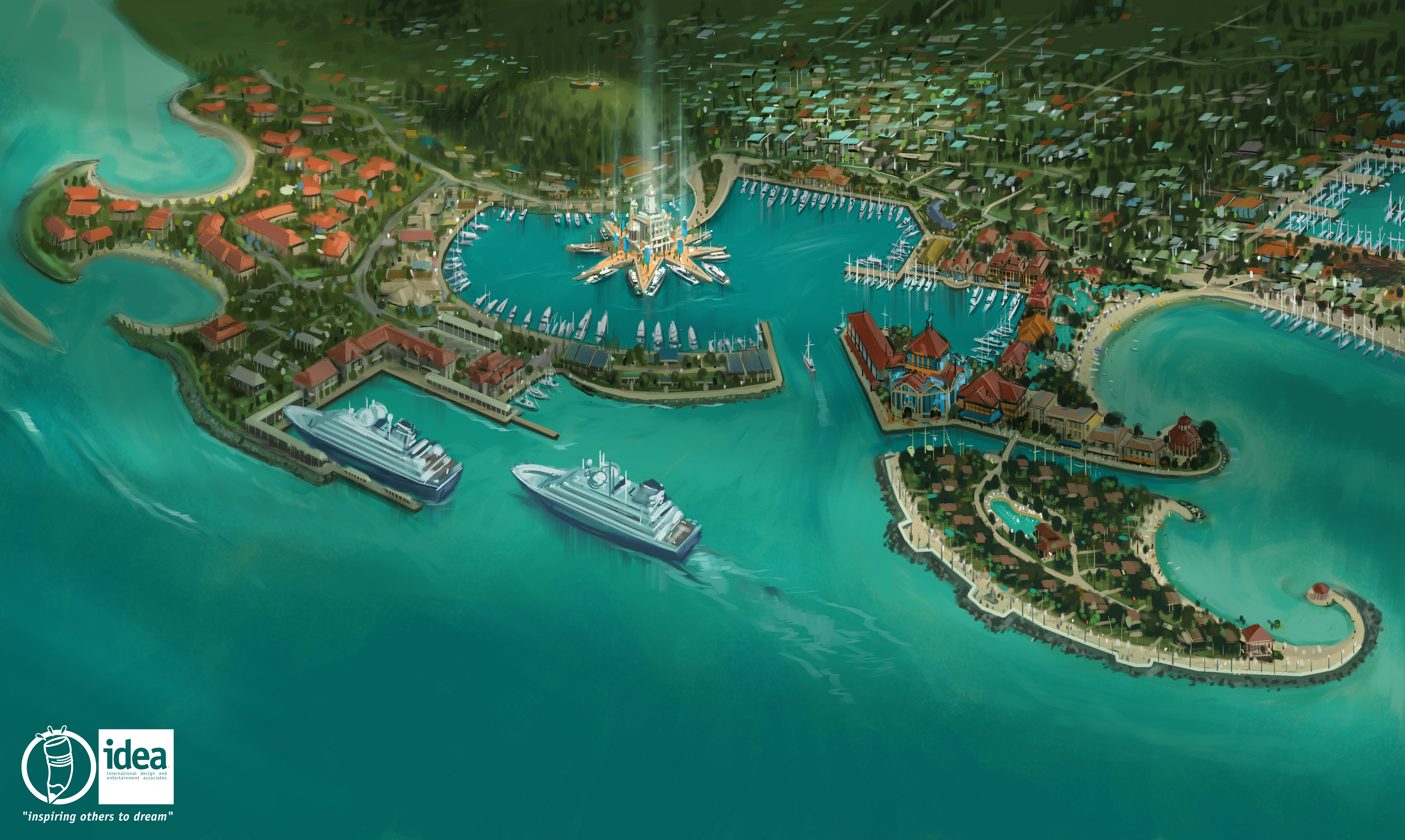Through our work since the year 2000 in and around the Caribbean we have seen an opportunity to expand the revenue streams of port authorities with mitigated risk and capital. Unfortunately, the authorities are often slowed by bureaucratic processes and limited vision. Many ports have not done a proper valuation of their assets and see their location as industrial brown sites and not as valuable waterfront property. Port authorities have also been too cautious in dealing with what is perceived as onerous cruise line positions when it comes to incorporating or planning for cruise passenger service. It is the port authority that controls the valuable asset from which the cruise line seeks access. While it is true that cruise lines may choose to visit other destinations, it is ultimately the cruise passengers that determine destinations and itineraries.
The recently developed Port of Historic Falmouth Jamaica illustrates a new approach for Port Authorities to develop in new ports or renovations to existing commercial port properties. The Falmouth Port design contains commercial leasable space, special events space, and urban park settings which extends the city into the port. The added revenue streams enhance the property value and will deliver substantial income for the Port over the long term. The commercial enterprise of the port is now more in line with sustainable real estate business models not an outdated industrial Port model. Authorities should look into being multifaceted real estate holdings where landside locations can be leveraged and incorporated into the main stream urban business community. Every port authority has a responsibility to their government or in some cases their shareholders to maximize income from their holdings. Many ports have limited their business to two revenue streams, handling fees and service fees or a combination of the two. Future looking ports need to see the value of their location in real estate terms and create plans to increase their asset value through a long term vision plan, not a long term plan of existing models but rather an incorporation of new aspects of real estate investment. A successful port should have in addition to port handling and service fees, rental income from retail and commercial enterprises not associated with boxes. They should incorporate multiuse terminal facilities which can be used as public and special events space and include income producing onsite parking. Their ideal location also allows for water front resort, hospitality or residential units to be constructed in the urban core. The revitalized business activities open opportunities for strategic partnerships in the surrounding community and with related support service providers which both provide incremental revenue to the port authority. Ports of the past were vibrant parts of their cities and provided for a healthy sustainable urban core and they can be once more with proper planning and vision.
Hugh Darley is a vision planning consultant to the cruise and hospitality travel industry and is a regular speaker in industry conferences and conventions and is available for professional consultation on port planning and vision projects.




